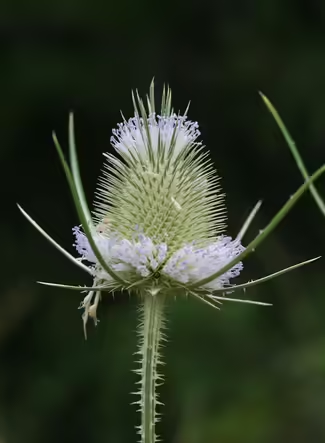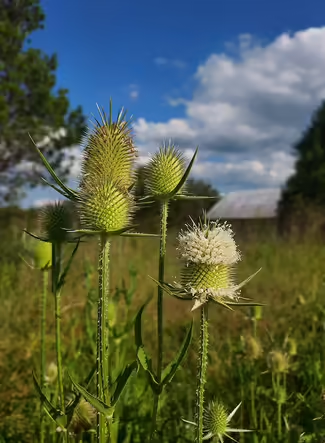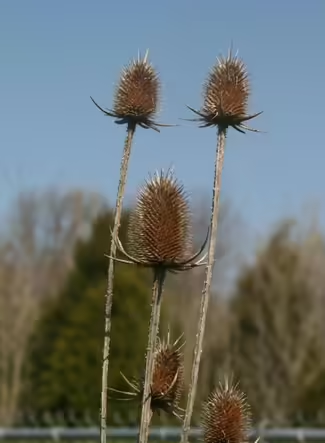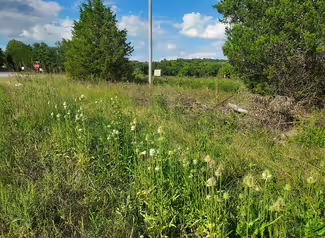On this week’s Good Growing Podcast, we continue our discussion on problematic plants in the landscape by getting into some invasive plants we have in Illinois. We discuss invasive bush honeysuckle, oriental bittersweet, teasel, and purple loosestrife. These plants are having negative impacts in...
Invasive Teasels
Cut-leaved teasel (Dpsacus laciniatus) and common teasel (Dipsacus fullonum) are aggressive exotic plant species that can form large monocultures in prairies and savannas. Teasels lack any natural enemies in Illinois. Cut-leaved teasel tends to be more aggressive than common teasel.
History of Teasel
In the 1700s, teasel was introduced into North America and used in methods of raising the nap of cloth and as a dried flower.
Regulation of Teasel
Teasel is listed as an invasive plant in Illinois through the Illinois Exotic Weed Act.
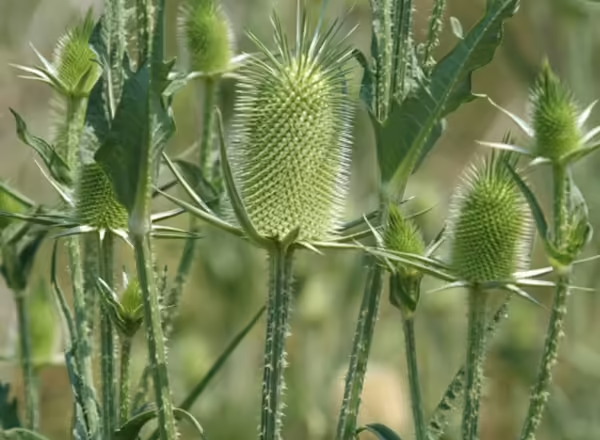
Teasel grows as a basal rosette for a minimum of one year then sends up a tall flowering stalk and dies after flowering and seed production. As a rosette, leaves can be ovoid to large and oblong. Older rosettes may be hairy.
Cut-leaved teasel blooms from July through September with white flowers and common teasel blooms from June through October typically with purple flowers. Flowers are small and packed into dense oval inflorescences. When in flower, leaves are large, oblong, opposite and sessile. They form into a cup shape and are prickly.
Stems are hollow when in flower with spines on the ridges. Stems can reach up to 7 feet in height. After seed production, erect brown stems may remain standing throughout winter.
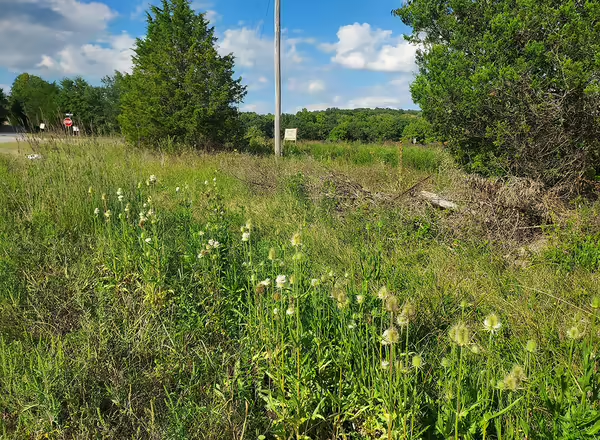
- Mechanical: Mowing is not an effective treatment; plants will still flower even with repeated mowing. Small rosettes can be dug out of the ground; large rosettes are difficult to remove by digging. Once flowering has begun, inflorescences (flower heads) can be cut from the plant and bagged, and roots may be chopped 1 to 2 inches below the soil surface. If inflorescences are left on site, seeds may still form.
- Cultural: Prescribed fire alone may cause a flush of growth from the seedbank. However, fall fires may increase the visibility of rosettes for herbicide treatment.
- Chemical: Always read and follow the herbicide label before initiating treatment.
- Foliar: Apply 1.5% to 2% v/v glyphosate or 2% v/v triclopyr solution to plants in the rosette stage. Treatment should occur in the spring or early summer and is less effective once plants begin to bolt. Treatment may also be done through the fall and winter since seeds with germinate and form rosettes that persist while other native vegetation is dormant.
For more information, explore Management of Invasive Plants and Pests of Illinois.
